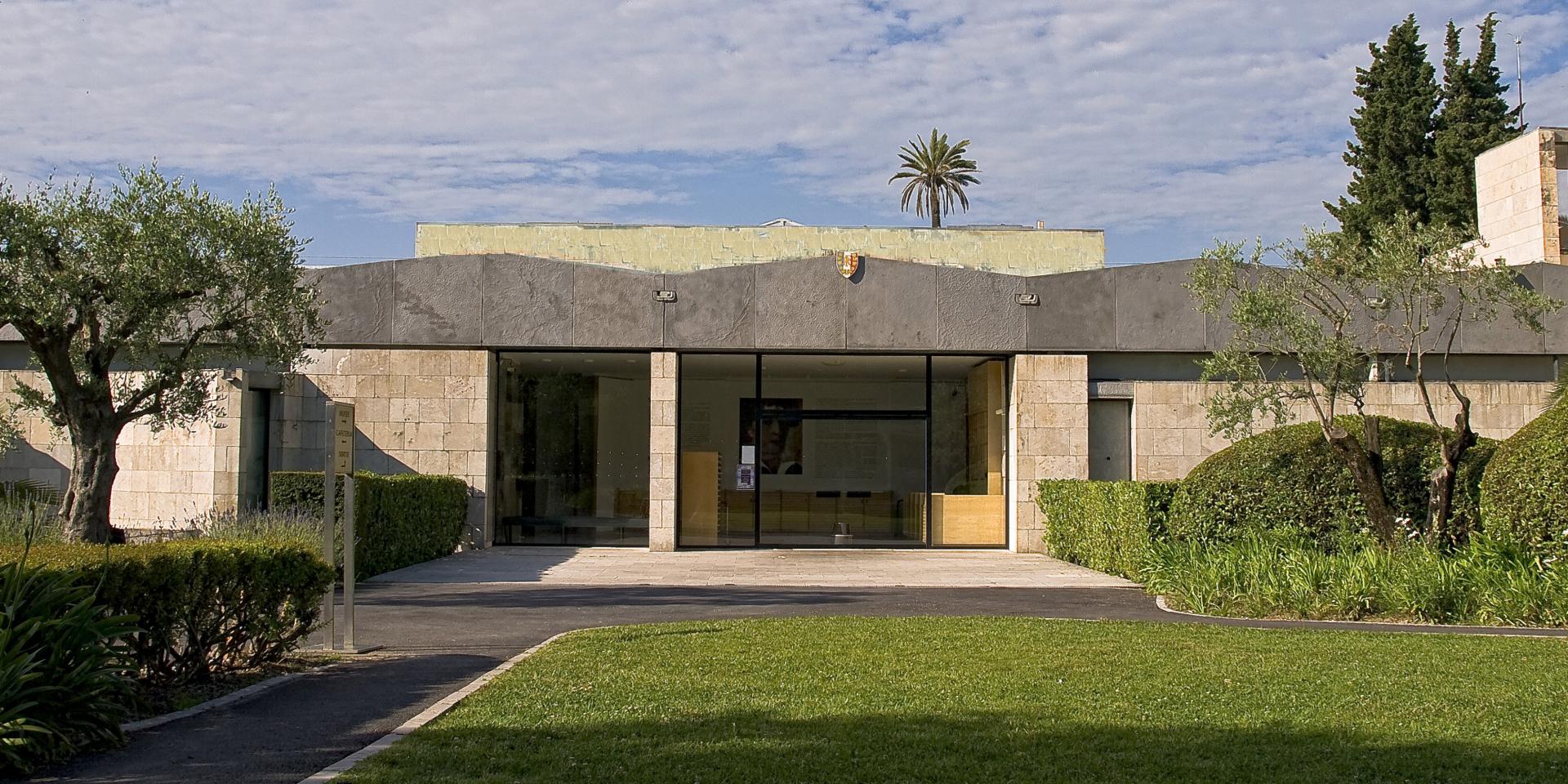The three national museums of the 20th century in the Alpes-Maritimes, Marc Chagall in Nice, Fernand Léger in Biot and Pablo Picasso, La Guerre et la Paix in Vallauris, grouped together in a national department*, present an exceptional collection of works that allow visitors to discover three great artists of the 20th century, attracted by the light and artistic environment of the Côte d'Azur.
Constituted by donation to the State, the museums have a monographic vocation, they offer visitors privileged spaces for contemplation and knowledge of the works. The collections are regularly enriched by exhibitions highlighting the creative force and topicality of these three masters of modern art.
Missions of the national museums
As a service of national competence*, under the supervision of the Ministry of Culture, the mission of the National Museums of the 20th Century in the Alpes-Maritimes is :
- to conserve, protect, restore on behalf of the State and present to the public the works of art in the collections listed in the inventory in its care
- to contribute to the enrichment of the national collections by acquiring cultural property on behalf of the State, whether in return for payment or free of charge
- to ensure the reception of the widest possible public, to develop the use of the collections, to promote knowledge of their collections, to conceive and implement educational and dissemination actions aimed at ensuring equal access to culture for all
- ensure the scientific study of its collections
- to contribute to education, training and research in the field of art history, archaeology and museography
- to preserve, manage and develop the buildings with which they are endowed.
To discover the Fernand Léger national museum, in Biot, click here
To discover the Pablo Picasso National Museum, La Guerre et la Paix, in Vallauris, click here
For more information on the national museums of France, click here
The collection of the Musée national Marc Chagall
The museum's collection has evolved and been enriched since the institution was founded : it was originally formed by the donation in 1966 of the 17 large canvases of the Biblical Message by Marc Chagall and his wife Valentina Brodsky. In 1972, it was completed by a collection donated by the artist, including all the preparatory work and numerous other works, such as the gouaches of the Bible (1931), the 105 engravings of the Bible and their copperplates, an important series of lithographs, five sculptures and a ceramic. The total donation amounts to more than 250 works.
The museum was inaugurated on July 7th 1973, the anniversary of the artist's birth, in his presence. Under the title "Musée national Message Biblique Marc Chagall", it was the first monographic museum in France to be opened during the artist's lifetime.
Marc Chagall continued to enrich the collections until his death in 1985, by offering copies of his illustrated books at the time of their publication or suites of his illustrations (separate edition of the illustrations, without the text).
New acquisitions have since enriched the collections, thanks to the support of the painter's heirs. In 1988, the museum received a large part of the Chagall donation - a procedure that allows the payment of inheritance rights in works of art - with 300 works. In particular, ten biblical paintings, deposited by the Musée National d'Art Moderne - Centre Georges Pompidou, recipient of the dations.
In 1986 and 1988, Charles Sorlier, Chagall's regular lithographer at the printer Fernand Mourlot, donated a large collection of lithographs on biblical and secular subjects to the museum.
In 2008, with the agreement of the family, the Musée du Message Biblique was renamed the Musée National Marc Chagall and opened to all of the artist's work.
The Marc Chagall National Museum bears witness to both the spirituality of the artist's work and his inclusion in the artistic trends of the 20th century.
Since 2010, the programme of exhibitions has aimed to explore both the life and work of Chagall and the diversity of techniques that the artist experimented with during his career: "Marc Chagall, woven works" (2015), "Marc Chagall and Music" (2016), "Chagall, Sculptures" (2017), "Of colour and ink. Marc Chagall and the Art Magazines" (2020) and "Chagall, the passer of light" (2021).
A contemporary cultural program
Since the early 2000s, the National 20th Century Museums of the Alpes-Maritimes have placed contemporary creation at the heart of their artistic and cultural project, working on the points of encounter and extension between the three tutelary and emblematic figures of the artistic avant-garde, Marc Chagall (1887-1985), Fernand Léger (1881-1955) and Pablo Picasso (1881-1973), and the artists of the 21st century.
Regular exhibitions have shown major artists on the international contemporary scene at the Musée National Marc Chagall, such as Roman Opalka (2008), the artist duo Joana Hadjithomas and Khalil Joreige (2018) and the video artist and filmmaker Clément Cogitore (2019).
*Service à compétence nationale:
A service with national competence, or SCN, is a particular category of administrative service, which could be situated halfway between the central administration and the deconcentrated administration. It carries out operational missions throughout the national territory: management functions, technical or training studies, and activities for the production of goods or the provision of services. The SCN were established in 1997. Together with the central administrations and the deconcentrated services, the services with national competence constitute one of the three main modes of organisation of the State civil administration.
Visuel : entrée principale du musée national Marc Chagall, à Nice. Architecte : André Hermant (1973). Photo : DR/musées nationaux du XXe siècle des Alpes-Maritimes, 2021.


![Marc Chagall, Couple de paysans ou Départ pour la guerre, 1914. Mine graphite, encre, gouache blanche sur papier collé sur carton, 18,5 x 22,8 cm. Paris, Centre Georges Pompidou, Musée national d’Art moderne / Centre de création industrielle, dation [AM 1988-177]. Photo : © Centre Pompidou, MNAM-CCI, Dist. GrandPalaisRmn / Philippe Migeat © Adagp, Paris, 2024](/chagall/sites/chagall/files/styles/thumbnail_w780/public/2024-04/Chagall_couple_paysans_fdnoir_1920x960px.jpg?itok=PtAoJ8dy)